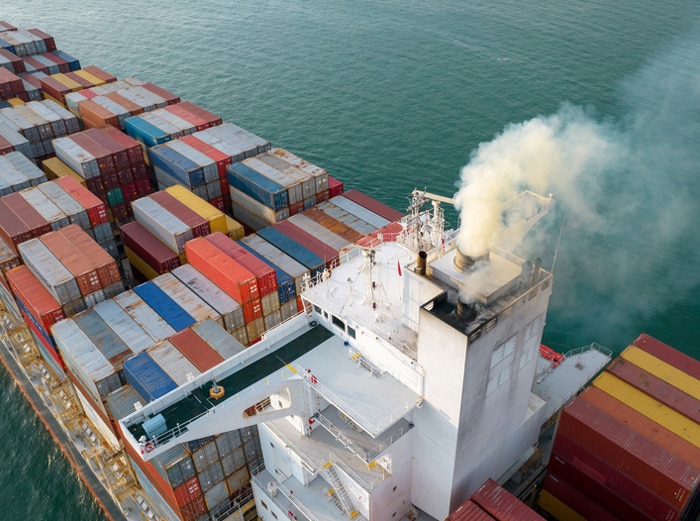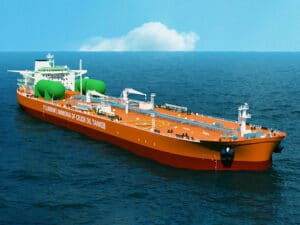
Op-Ed: Shipping decarbonization one step at a time
Written by Heather Ervin
Credit: Shutterstock
Maritime needs to start viewing the shipping decarbonization transition as running a marathon, not a sprint says Mikael Wideskog, Wärtsilä’s Director, Sustainable Fuels and Decarbonization.
When you train for a marathon, you don’t start by running the entire distance. You break it down into manageable steps, which lead to completing the distance. That’s the approach we should take for shipping decarbonization.

But imagine that you need to complete your race by a deadline, with intermediate running objectives in between. Now, that’s what is happening with regulation tightening. The European Union is driving its decarbonization program, with China and the United States looking to follow suit. The IMO is gradually tightening emissions reduction requirements with the Carbon Intensity Indicator while MEPC 80 is likely to put further regulatory pressure on the industry as it reviews the IMO’s decarbonization strategy.
Now, the race has got a lot more complex. The complexity of the energy transition, in combination with regulatory challenges, creates risk for ship owners and operators. They are in an unenviable position to make choices about compliance steps while also seeking to adopt future-proofed and flexible solutions for assets that deliver substantial payback.
It is easy and understandable to adopt a wait-and-see approach. Yet, this will not do. Starting steps today can guarantee compliance and with the final step of decarbonizing shipping. But, we are too focused on the last step—ignoring how current technology can progress today while we wait for these fuels to scale up. So, what can shipping do today?
Start today
We should start with what we have at our disposal. Ship owners and operators can use energy-efficient technologies (EETs) today for retrofit or newbuild projects, including installing efficiency-boosting technology. EETs will play a critical role in reducing emissions compared to today’s leading designs, all the while avoiding measures which could lead to even more complexity with potential breaches in charter party agreements.
Beyond EETs, using sustainable biofuels as drop-in is a significant shipping decarbonization step which ship owners and operators can use. Biofuels play a valuable role in lowering emissions in short to medium term without a capital-intensive fleet renewal or retrofitting commitment.
LNG as a marine fuel is also a practical and pragmatic solution for the shipping industry to emissions today. While it requires an initial investment, it offers significant savings in fuel costs compared to other future fuels, increased profitability of vessel operators and risk reduction.
Each of these solutions that support the decarbonization journey requires ship owners to take an important step today. These steps include investing in a modular engine and bringing consultative bodies who can offer insight into the pros and cons of each solution. Taking these steps can futureproof assets and secure an insurance premium when the industry awaits future fuels to become readily available.
Tomorrow’s solutions
There is a growing demand from the global shipping industry’s customers for cleaner, greener energy solutions, particularly those with ambitious scope three pledges. These commitments are sparking demand and investment in low-emission shipping, with cleaner alternative fuels coming to the fore. Yet, there are many contenders which may serve deep-sea shipping in the future.
Methanol is emerging as one of the most viable and attractive options for improving maritime sustainability. When produced from renewable sources, methanol is a carbon-neutral fuel that is easier to handle than other alternative fuels. But with very few vessels currently operating on methanol, industry experience in integrating such systems is limited.
Ammonia is another emerging final step for decarbonization and is gaining traction across the industry as it’s a carbon-free fuel. In addition to our work on the W25 engine, an engine concept running on ammonia will be developed in 2023 to expand our portfolio to equip ship owners with tools for whatever sustainability pathway they choose.
Ultimately, the future pathway towards decarbonization will likely come from the use of clean fuels, and when these are readily available, they can be used either in whole or blended with conventional fuels or will require alternative power sources. Methanol and ammonia are emerging as viable and attractive final steps, and the industry is already making positive progress towards bringing these alternative fuels online.
The clock is ticking
Decarbonization is possible. But it can only do so with the right strategy, underpinned by coherent regulation and a willingness to explore and adopt new flexible, sustainable technologies and fuels. But we cannot achieve it alone. We will need to collaborate across the entire marine value chain to make decarbonization a reality.
De-risking the decarbonization journey is a major strategic priority for shipping companies. With so many unknowns regarding future fuels and technologies, there is a great commercial risk for those who rush in. That’s why it’s vital to work with the right partners who have the skills and expertise to navigate the global shipping industry in its fraught transition to net-zero.
However, it’s OK to admit that we don’t have all the answers, and we’ll need to work together on each step of the journey towards decarbonizing shipping. Like a long-distance running race, it helps to follow a training plan set by an expert step by step to meet the goal. So, every step that you take now, guided by experts, will ultimately set you on a journey towards success.




